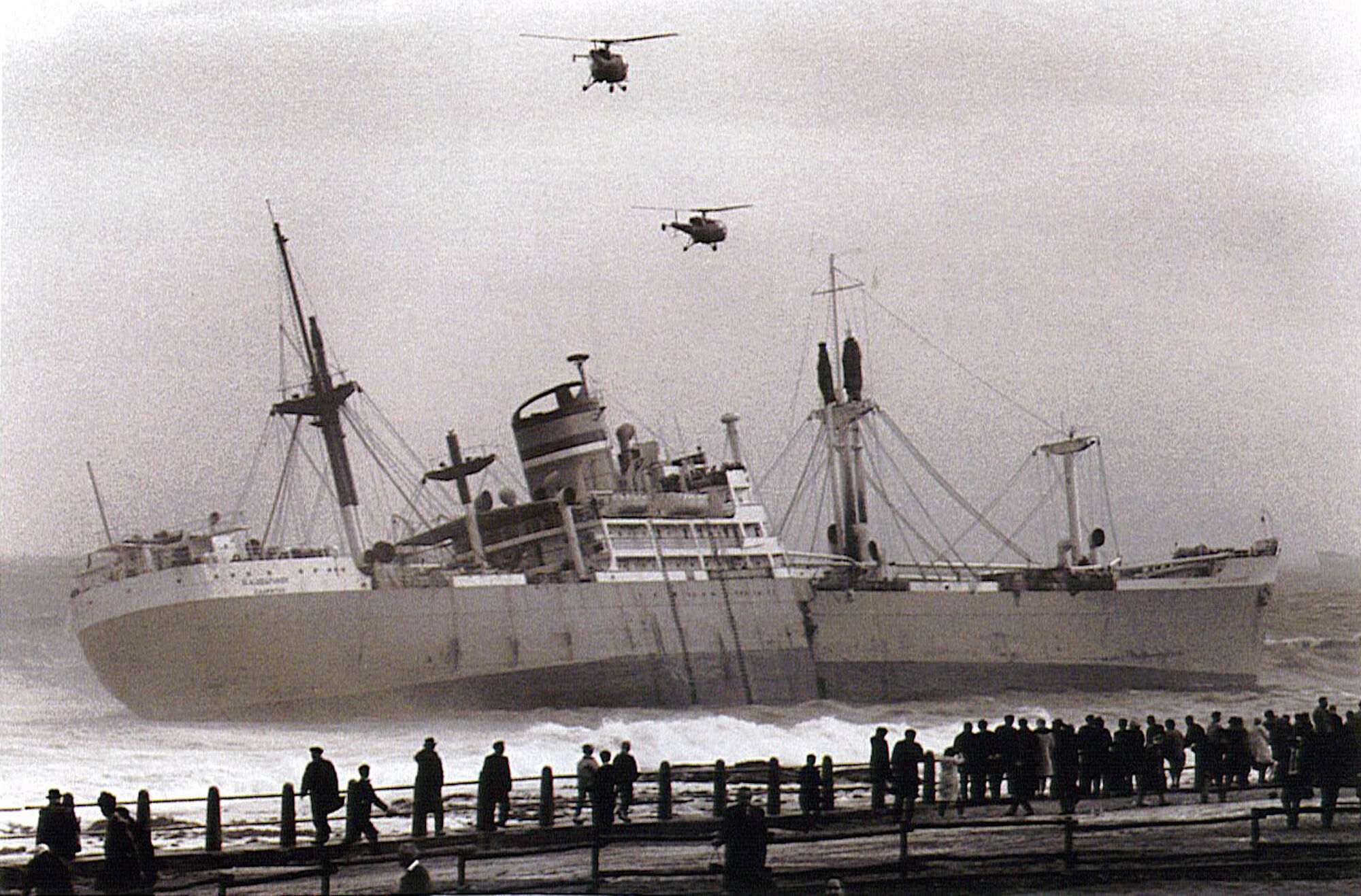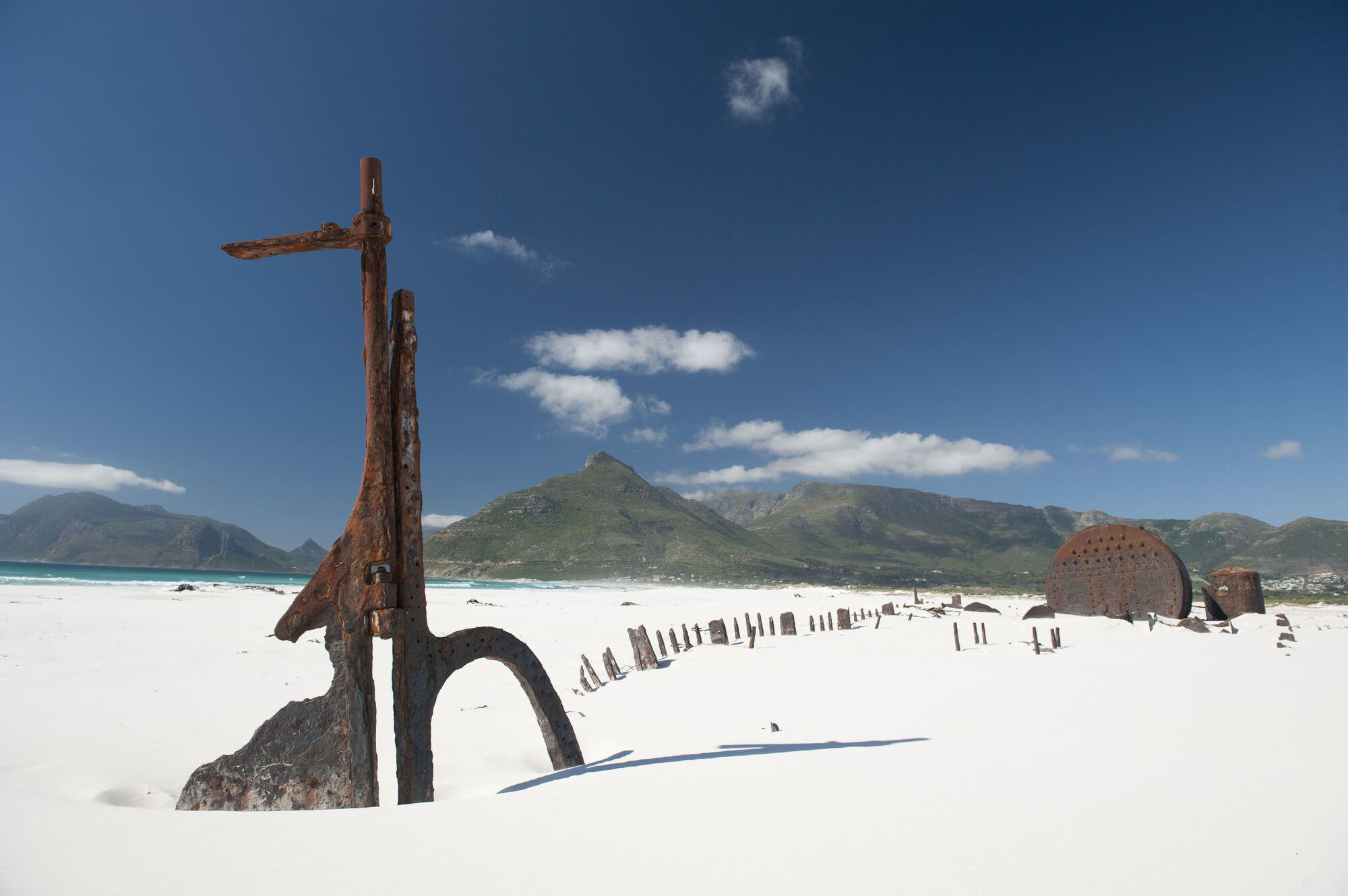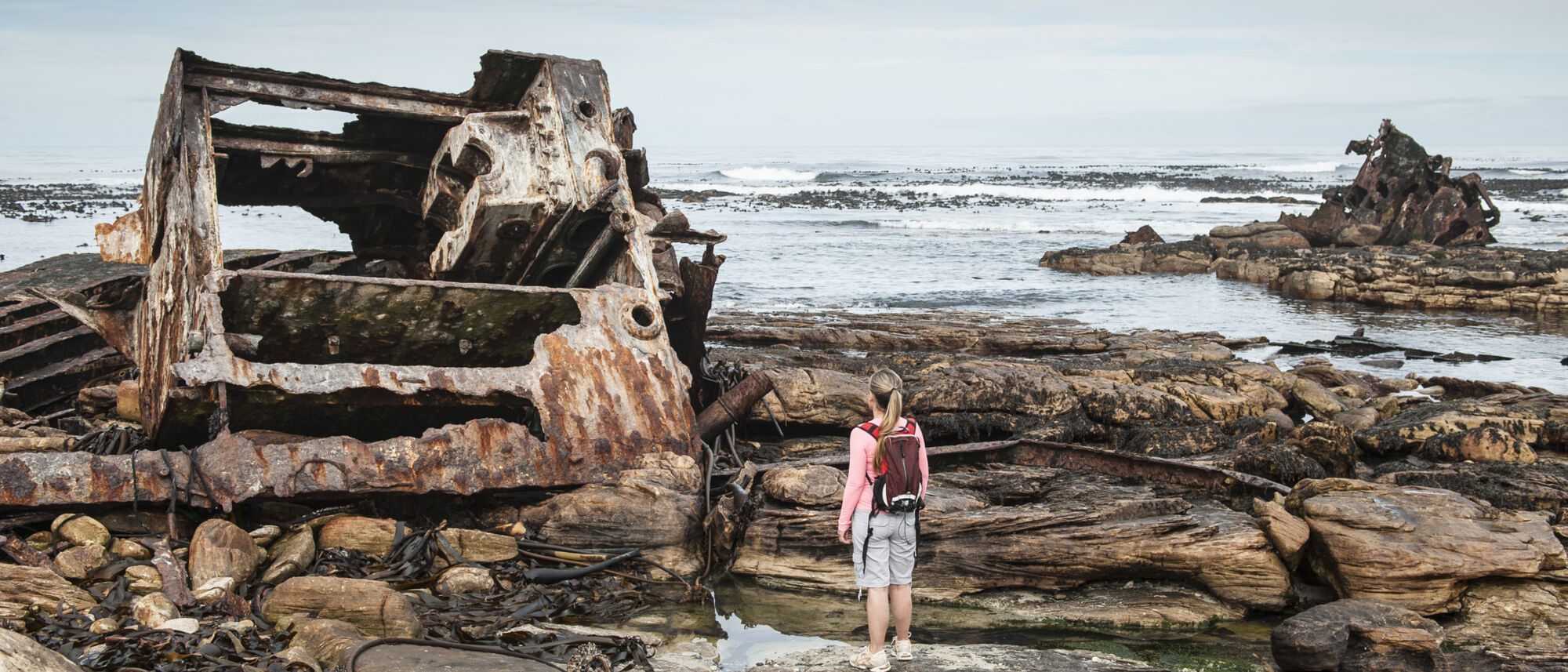RMS Athens, Mouille Point
The tragedy of the RMS Athens involved the loss all hands on the night of 17 May 1865. This 68-metre Union Line barque was employed in the mail run between Southampton and Cape Town. She was wrecked while trying to steam out of Table Bay during the Great Gale of 1865. This infamous storm, the most destructive in the Cape’s history, resulted in the loss of 19 ships.
The Athens had been at anchor in the bay, preparing to leave for Mauritius. Her last anchor cable parted at about 6pm and Captain Smith headed out to sea, trying to ride out the storm in deeper water.
As the ship rounded Mouille Point, she was hammered by heavy seas. It’s thought that her boiler fires may have been extinguished by an enormous wave, leaving her to drift towards the shore. Local residents assembled on the beach with lights, ropes and life-buoys, but the raging seas meant no rescue was possible. The only living creature to survive the wreck was a pig that managed to swim ashore.
VIEW IT: The engine block of the Royal Mail Ship Athens protrudes above the waves 50 metres off the parking lot at the intersection of Beach and Fritz Sonnenberg roads in Mouille Point.
SA Seafarer,Green Point
The SA Seafarer ran aground in a terrible winter storm about 50 metres off the Green Point Lighthouse parking lot on 1 July 1966. The event caused a serious environmental scare because the ship’s cargo included drums of tetra-ethyl lead which emits a poisonous gas when in contact with water. The vessel had 63 crew members and 12 passengers on board and it seemed unlikely anyone would survive if they landed up in the raging sea.
Third Officer Richardson had his wife and six-month old daughter on board, coming out to South Africa as immigrants. Little did they know when they left England that the last part of their journey would be by helicopter. Pilots of the 17th Squadron, Maritime Group, were the heroes of the day. Three Alouette choppers were employed, taking off all the passengers and crew without any loss of life. The rotating beam of Green Point Lighthouse was stopped and directed at the hapless ship to provide illumination for the helicopter crews.
Due to the presence of the tetra-ethyl lead, the Mouille Point beachfront was closed to the public for a few days until divers were able to locate the drums, and found them intact. Today, the remains of the Seafarer lie on the seabed and resemble a junkyard, with its huge propeller shaft and countless machine parts strewn about.
FIND IT: The SA Seafarer lies beneath the waves about 50 metres west of the Green Point Lighthouse parking lot in Mouille Point.

Oudeschip trail, Sandy Bay
This scenic hike takes you to the wreck of the MFV Harvest Capella, a steel fishing boat that ran aground on the Oudeschip Peninsula in 1986. The trail heads south from Llandudno, crossing Cape Town’s only nudist beach, Sandy Bay. Look for a trail on your left which leads into a milkwood grove. There are no signs but if you stick close to the shoreline you’ll soon find the trail. It takes about an hour to reach the wreck.
It makes sense to time your arrival at low tide so that you can walk across the rocks, otherwise you’ll need to wade through cold Atlantic water. When you reach your destination you’ll be able to enjoy views of Table Mountain, Lion’s Head, Little Lions Head and Karbonkelberg. The Bos 400 wreck, a French crane barge that was wrecked in 1994 can also be seen from here.
There’s an alternative route with access from the Hout Bay Dunes parking lot. However, the descent and returning ascent are rather steep.
Take note: Don’t hike alone and stick with your group. There have been a number of robberies in this area.
SS Kakapo, Kommetjie
The wreck of the Kakapo is still perfectly visible above the high-tide line on Noordhoek Beach. Named after an endangered New Zealand parrot, the Kakapo was a 1093-ton, schooner-rigged steamship, built in Scotland in 1898. She was bought by the Union Steam Ship Company of Australia and New Zealand in 1900 and dispatched from Great Britain via the Cape.
Driving rain, thick mist and huge swells made visibility extremely difficult off the Cape. The officer-of-the-watch mistook Chapman’s Peak for Cape Point and ordered a turn to the east. On the evening of 25 May 1900, the Kakapo ran aground just north of the mouth of the Wildevogelvlei. Strong winds and large waves drove the vessel far up the beach, where she settled in the soft sand.
Two crew members used a rope ladder to get to the beach and walked inland until they reached the farm Brakkloof. The alarm was raised and the rest of the crew were rescued. Captain Nicolayson chose to remain on board and legend has it that he continued to live on the Kakapo for three years.
VIEW IT: To get there, walk south along Noordhoek Beach from Noordhoek parking lot (1¼ hours) or north from the Wireless Road beach parking lot in Kommetjie (30 minutes). The remains of the boiler, rudder and ribs lie high up on the beach.

Shipwreck trail, Cape Point
The visible shipwrecks strewn along the coastline of Cape Point Nature Reserve, at the southernmost tip of the Cape Peninsula, hint at carnage beneath the waves. The most easily accessible of these is the Thomas T Tucker, a liberty ship carrying supplies during World War II, which stuck Albatross Rock in 1942 on her maiden voyage.
Wild oceans, raging winter storms and hidden reefs, like Bellow’s Rock and Albatross Rock are part of the reason that 26 ships met their end along this coast. Albatross Rock, which lies off Olifantsbos Point, has taken six ships. The first to hit this rock was a steam tug named Albatross, from which it derives its name.
To get to the Thomas T Tucker follow the yellow markers from the Olifantsbos parking lot through the fynbos to the water’s edge. The route is about 3 kilometres long and a fairly easy beach walk. Another two kilometres further, you’ll find the wreck of the Nolloth, a Dutch vessel wrecked in 1965. Bits of the ship can be found strewn along the beach.
Cost: A permit is required for entry. The standard entry fee for adults is R340 and R85 for South African with a valid ID. capepoint.co.za
Take note: Pick up a map of the reserve’s various trails at Buffelsfontein Visitors’ Centre.
SS Clan Stewart, Simon’s Town
The SS Clan Stuart, a cargo steamship built in 1900, arrived in Simon’s Bay ‘near-light’ (carrying very little cargo). On 21 November 1914, during a southeasterly gale, her anchor began to drag and she was driven onto the rocks near Glencairn Beach. Her cargo was saved and the crew rescued by lifeline.
The tug Ludwig Wiener pulled her off the rocks and towed her back to Simon’s Town, but she was refused entry to the harbour until further repairs were done, in case she foundered in the approach-channel. Therefore she was run ashore on Mackerel Beach where two anchors were used to keep her steady and prevent her from sinking. Extensive repair work was undertaken, but all efforts proved futile. In 2004 the place where she lies was declared a protected marine area and hence a permit is required for any work or study to be carried out on the site.
VIEW IT: All that remains visible of the Clan Stuart today is her engine block jutting above the waves 50 metres off Mackerel Beach (in front of the Harbour Bay Mall between Simon’s Town and Glancairn).


















